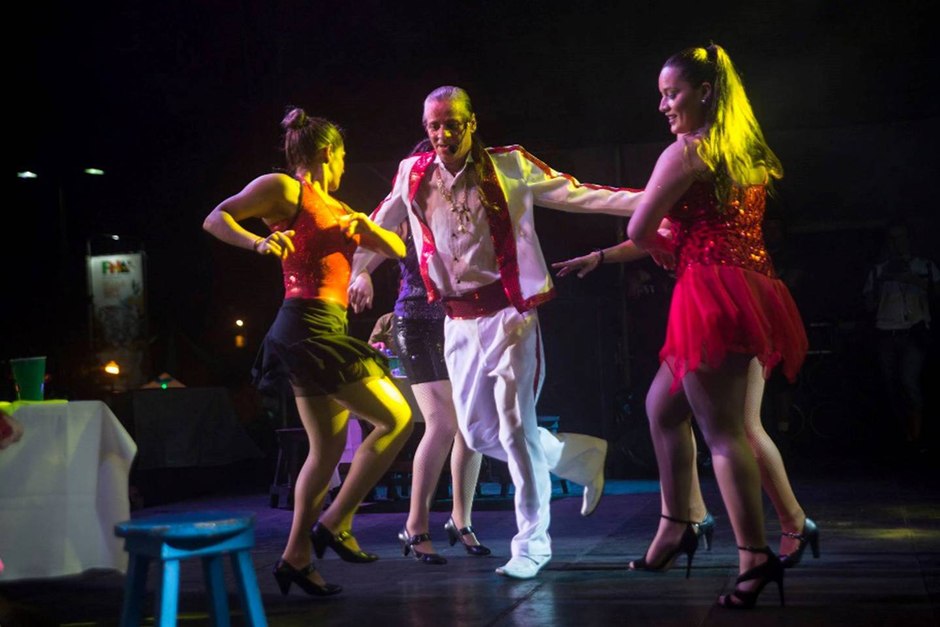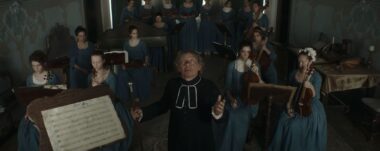Beyond leaps and bounds: Creole swing in Costa Rican culture 1950-2012

During the second half of the twentieth century in Costa Rica, different musical genres arrived in the country, which were in fashion in their respective countries. Among these rhythms were bolero, mambo, swing and cumbia. In the case of swing and cumbia, these found a fusion in the dance halls of different neighborhoods of San José, such as Karymar, whose birth is related to this venue. The cultural implication of this dance within the Costa Rican society is a key factor to understand the development of this dance during these last decades, besides becoming a dance feature of Costa Rica, which represents a contribution to the identity, which has a constant need for validation by its inhabitants.
Prior to the consolidation of Creole swing as a popular dance within the salons of the Greater Metropolitan Area, [1]was the tango, which enjoyed great popularity in the thirties and forties.[2] The tango was also associated with morbidity and lasciviousness. Women who danced it were considered dissolute or of low class.[3] The popularity of the dance halls, was the appropriate space for the Costa Rican population that arrived to these places, could develop a particular style of dance in this case, the cumbia.
The beginnings of Creole Swing: Improvisation
There are several theories as to the emergence of this dance, one of them refers to the Creole swing steps were brought by truckers from the United States or by people who traveled to that country and had the opportunity to dance the genre of the big swing bands. Another affirms that it was by workers who were in the American zone of Golfito, where the American presence was abundant in this region.[4]
In this case, musicologist Francisco Tristán affirms that the steps of Creole swing come more from rock & roll, especially after the movie Rock around the clock.[5] However, in spite of the previous theory, there is no substantial proof that the Creole swing comes from rock & roll. In the middle of the Josefino dance halls, many representatives of so-called conflictive sectors such as prostitutes, truck drivers, shoemakers, cab drivers and laborers came to these entertainment centers to listen to the popular music of the moment.
In the midst of the dance routines, steps from swing began to be used as a new way of dancing cumbia. On a more socially oriented level, it is worth noting that by the 1950s, there was a highly stratified society, with well-defined patterns of behavior and social coexistence, so these sectors felt these spaces as a convenient place to adapt their steps and movements.[6]
Se prohíbe bailar Swing (“You can’t dance Swing here”)
Although there was a progressive change in terms of songs over melodies, the preference for swing remained persistent.[7] With the emergence of Creole swing, as a more dynamic way of dancing cumbia, a period of expansion to other bars in the capital began, so that this form of dancing became increasingly known, but also increasingly discredited. Jorge Miranda, relates that “at some point, without thinking and without planning it, it occurred to me to shake hands with a dancer who was with me and we liked the stick,”[8] therefore, it became an increasingly common practice within Karymar, the lounge where it is attributed as the cradle of Creole swing. By the 1960s, there was a wide variety of dance halls such as Los Molinos, Los Jocotes, Los Higuerones, Mi Oficina, Bambú, Cañaveral, El Sétimo Cielo, Mi primer amor, among others, where the steps of this new dance were also developed.[9]
One of the testimonies collected in the documentary Se prohíbe bailar swing, is that of Carlos Moreira alias “Gringo”, who was one of the first dancers to venture into the creation of this dance expression. In 1993, this lender won first place in a Creole swing contest, held at the OKAY discotheque.[10] This makes reference that for the nineties there is already a somewhat different vision with respect to Creole swing. The first generation of dancers of Karymar, has approximately between 30 and 60 years of age.[11] This generation was the one that had to deal with the constant social and governmental finger-pointing. Some testimonies such as that of Cecilia Venegas, who was beaten by a policeman, and Jorge Miranda, who was arrested for being one of the authors of “esa pachucada”, affirm the repudiation of the identity representation that these sectors began to have through this dance.[12]
It is from the eighties onwards, that there was a greater acceptance of this dance, in programs such as Fantástico, where Creole swing competitions were adapted, so that the criminalization and stigma for those who practice it is leaving more and more behind, to the formalization of this dance expression. The dance academies also influenced the popularization of this dance in the mid-1990s. In the specific case of Merecumbé, it began to be taught almost at the same time the academy was founded.[13]
Towards the 21st century
In recent years, efforts have been made for the visibility and recognition of Creole swing as a Costa Rican identity dance. In 2012, through Decree No. 37086-C, Creole swing [14]was declared as intangible cultural heritage, which makes the State part of this process of formalization and vindication that this dance has had during the last decades. In the page Ambassadors of Swing there is information about Creole swing courses, as well as different dance projects of this organization.[15]
For her part, Congresswoman Laura Guido has a proposal for a law that would make every May 3 the day of Creole swing, as part of another demonstration of the state’s tendency to recognize the contribution of this dance expression.[16] The contribution made in the last decades, is expressed through the recognition of the originality of its creators, who seen from the elite, were pachucas and disreputable people. In spite of the initial disdain for this dance, it was able to survive due to the rapid expansion of its movements and its transmission in television programs and contests.
Bibliographic references
Chaves, Bary. “Lo que se baila en Costa Rica: Bolero: musical analysis of a Costa Rican cumbia.” Herencia Magazine 20.1-2 (2007): 137-146. https://revistas.ucr.ac.cr/index.php/herencia/article/view/10039/9444.
Swing ambassadors. “Creole swing and bolero ambassadors. ” Accessed October 19, 2021. https://www.embajadoresdelswing.com/.
Hernández, Gabriela. “Swing dancing is forbidden.” Latin America Television (TAL), November 20, 200. https://www.youtube.com/watch?v=VxVF0zdSDA4. 3https://www.youtube.com/watch?v=VxVF0zdSDA4
Hernández, Juan José Marín. “Melodies of perversion and subversion. An approach to popular music in Costa Rica. 1932-1949.” Diálogos Revista Electrónica de Historia 6.2 (2005): 1-40. https://www.redalyc.org/pdf/439/43960212.pdf.
López Oviedo, Claudia Lucía and Paola Salazar Arce. “”KARYMAR”: An ethnography of dance space.” Cuadernos de Antropología 17-18 (2008): 127-134. http://www.kerwa.ucr.ac.cr/bitstream/handle/10669/13238/7226-9842-1-SM.pdf?sequence=1&isAllowed=y. http://www.kerwa.ucr.ac.cr/bitstream/handle/10669/13238/7226-9842-1-SM.pdf?sequence=1&isAllowed=y
López Oviedo, Claudia Lucía and Paola Salazar Arce. “Brincos y vueltas a ritmo de swing. Un análisis antropológico de la práctica del swing criollo, a partir de las representaciones sociales que bailarines y bailarinas configuran respecto a este fenómeno dancístico. “Thesis in Anthropology. University of Costa Rica, 2010. https://core.ac.uk/download/pdf/67712304.pdf
Redacción NCR. “PAC Congresswoman proposes to celebrate the “National Day of Creole Swing” every May 3rd”. Costa Rica News, September 2, 2021. https://ncrnoticias.com/politica/diputada-del-pac-propone-celebrar-el-dia-nacional-del-swing-criollo-cada-3-de-mayo/
Presidency of the Republic. “Decree No. 37086-C. ” Ministry of Culture and Youth, May 3, 2012. http://www.patrimonio.go.cr/patrimonio/inmaterial/declaraciones_nacionales/Swing_Criollo/DE_37086-C.aspx
Vargas Molina, Heriberto José. “Transformations in the field of popular dance music in Costa Rica in the decade of 1985-1995.” B.A. Thesis. University of Costa Rica, 2015. http://www.kerwa.ucr.ac.cr/handle/10669/73020
Vega, Eduardo. “Swing criollo was born among blood, garrotazos and jail. ” La Teja, January 6, 2018.https://www.lateja.cr/nacional/swing-criollo-nacio-entre-sangre-garrotazos-y/CQ62RQXXCZGHTD2J2CD4KA2SPM/story/
Summary of important points
-The influence of American swing
-The birth of Creole swing due to improvisation
-Classist prejudice against those who danced Creole Swing
-Increased acceptance from the 1980’s onwards
-Institutionalization of the Creole swing steps
-Recognition as Intangible Cultural Heritage

Author: Elisabet Mena Jiménez
Degree: Bachelor of Arts in History
Contact: 8652-8488
Instagram: elisabetm4
Twitter: Elisabet

[1] The Greater Metropolitan Area corresponds to the territories closest to the capitals of the provinces of Alajuela, Cartago, Heredia and San José, and is also the most populated territory in the country.
[2] Heriberto José Vargas Molina, “Transformations in the field of popular dance music in Costa Rica in the decade of 1985-1995.” (Bachelor’s thesis. University of Costa Rica, 2015), 39.
[3] Juan José Marín Hernández,. “Melodies of perversion and subversion. An approach to popular music in Costa Rica. 1932-1949.” Diálogos Revista Electrónica de Historia 6.2 (2005): 24.
[4] Claudia Lucía López Oviedo and Paola Salazar Arce. “Brincos y vueltas a ritmo de swing. Un análisis antropológico de la práctica del swing criollo, a partir de las representaciones sociales que bailarines y bailarinas configuran respecto a este fenómeno dancístico.” B.A. Thesis in Anthropology. University of Costa Rica, 2010.
[5] Ibid, 119-120.
[6] Ibid, 122.
[7] Bary Chaves, “Lo que se baila en Costa Rica: Bolero: musical analysis of a Costa Rican cumbia.” Herencia Magazine 20.1-2 (2007): 142.
[8] Eduardo Vega, “Swing criollo was born among blood, garrotazos and jail.” La Teja, January 6, 2018.
Gabriela Hernandez, “Swing dancing is forbidden.” Latin American Television (TAL), November 20, 2003.
[9] Heriberto José Vargas Molina, “Transformations in the field of popular dance music in Costa Rica in the decade of 1985-1995.” (Bachelor’s thesis. University of Costa Rica, 2015), 46.
[10] Hernández, Gabriela. “It is forbidden to dance swing.” Latin American Television (TAL), November 20, 2003.
[11] Claudia Lucía López Oviedo and Paola Salazar Arce. “”KARYMAR”: An ethnography of dance space.” Cuadernos de Antropología 17-18 (2008):131.
[12] Eduardo Vega, “Swing criollo…”
[13] Claudia Lucía López Oviedo, “Brincos y vueltas a ritmo de swing…”, 133.
[14] See Decree No. 37086-C.
[15] See the Swing Ambassadors website.
[16] Redacción NCR, “Diputada del PAC propone celebrar el “Día Nacional del Swing Criollo” cada 3 de mayo”, Noticias Costa Rica, September 2, 2021.
Previous article COP26: Peaceful and Eco-responsible: Will Costa Rica be the Role Model to Save the Planet?
Navigate articles





